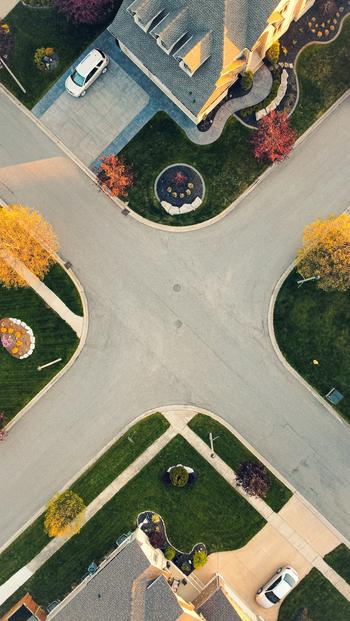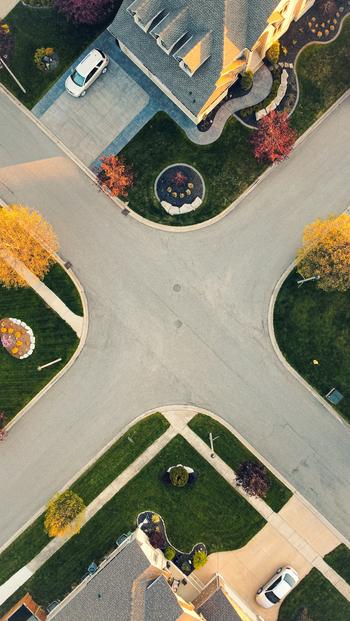The Long Island Museum


The Long Island Museum
Situated on Route 25A in Stony Creek and a brief distance from the still-running Grist Mill as well as the historical 3 Town Inn, the Long Island Museum provides site visitors an immersion right into the location’s rural past through three modern-day exhibition structures and 5 authentic structures sprawled across a nine-acre school.
Certified by the American Partnership of Museums in 1978 because of its excellence in exhibits, programs, and also collection care, as well as among the nation’s couple of Smithsonian affiliates, it presents American history and art with a Long Island link.
Mapping its beginnings to the Suffolk Museum, whose initial Christine Road structure stills stands today, it was developed to maintain, show, and also translate artefacts by five charter member at the end of the Great Depression: Ward Melville; his partner, Dorothy Bigelow Melville; Robert Cushman Murphy, a prominent biologist; Winfred Curtis, a regional physician; and O. C. Lemphert, an insurance coverage broker.
A growing collection, along with the addition of carriages in 1952, soon prompted the search for new head offices, which took form as the History Museum on one side of Route 25A. New to the then-named “Museums at Stony Creek,” it was old to the area.
The site was when the location of the D. T. Bayles Lumber Mill, whose lineage stretches back to 1874 as well as which ran up until 1955. Melville bought the structure at that time.
” Ward Melville always wanted Stony Creek to be a town comparable to the ones discovered in New England,” according to the Long Island Gallery’s web site. “The Long Island Gallery was influenced by this premise and gallery premises soon appeared like a New England town as local historic structures were meticulously tucked onto the grounds … Since 1939, the museum has grown to end up being a leading organization on Long Island and also the only Smithsonian associate in the region.”
THE BACKGROUND MUSEUM
The History Museum, which functions as the Site visitor’s Center and also present shop, is the place of transforming art events. Its latest “Fire as well as Type: New Directions in Glass,” for instance, included some fifty works by 8 contemporary artists, whose range of approaches, ideas, as well as beginning points showed the near-infinite nature of sculptural production.
The separate Cowles Gallery, named after Sharon Cowles, who when lived alongside Dorothy and Ward Melville and recently made a considerable payment to the gallery, showcases works from its permanent collection.
THE DOROTHY AND ALSO WARD MELVILLE CARRIAGE GALLERY
Keystone of the Long Island Gallery complex, which is located throughout Course 25A, the 40,000-square-foot Dorothy as well as Ward Melville Carriage Museum inhabits the website of the former Stony Creek Hotel and also portrays the pre-motorized transport era through more than a hundred horse-drawn vehicles presented in 8 galleries.
Its centerpiece, which shows up as quickly as the visitor goes into the building, is the “Poise Darling,” a 45-passenger, perfectly embellished omnibus initially pulled by a half-dozen horses. Richly upholstered and also spring-provisioned to decrease wheel effect on unpaved tracks, it was used on trips to Coastal Maine between the 1880s and also the early-20th century.
The “Going Places” Gallery features carriages that were typically used on Long Island, in addition to a fiber optic map that highlights the advancement of local transport paths.
The Wells Fargo Coach, among its exhibitions, is agent of the lorries made use of by Wells Fargo and Firm, whose transport services were essential to the nation’s westward development. Inaugurating overland traveler solution in April of 1887, it analyzed the then-astronomical price of $275.00 for the Sacramento, The Golden State, to Omaha, Nebraska, path.
The “Carriage Event” Gallery, based upon the 1893 World’s Fair transport structure, highlights the luxury wealth can inject right into a carriage.
The “Making Carriages: From Home Town Store to Factory” features the museum’s collection of lorries that were factory-built by the Studebaker Brothers, as well as in the Graves Bro’s Carriage Store, an original, 19th century, Williamsburg, Massachusetts center that has actually been reassembled right here.
The “Streets of New York” Gallery, total with simulated burning structures, displays the kinds of carriages and also vehicles that when plied its bustling roads. One of them, an 1887 street automobile, allows the visitor to trace the beginnings of mass transport. Pulled by one or two equines, it rode on rails, allowing New York City to move its masses on horse cars and truck lines between 1832 and 1917. They were replaced by mechanized street autos and trolleys, before being appropriated by steam-powered, elevated railroads that ultimately gave way to electrical, below ground metros.
The Crawford Residence Coach, located in the “Driving for Sport and also Satisfaction” Gallery, was offered to the New Hampshire resort of the exact same name in 1880, transporting up to 20 travelers, their baggage, as well as goods in between the railroad terminal and the hotel, as well as layering narrow, winding roads as it did.
The “Long Island in the Carriage Age” is a leisure of an intermodal transportation scene. A real deport wagon when picked up guests at the Stony Brook terminal of the Long Island Railway and supplied them to the bordering villages. The blowing sound of heavy steam engines completes the re-creation.
Although horse-drawn carriages may not evoke photos of deluxe, 2 various other galleries resolve this myth-the “Gentlemen Train House” and also the “European Autos” ones. The former displays the extravagant automobiles that motivated the 19th-century Gold Coast carriage residences, which were once essential to Long Island’s North Coast estates, and also the latter displays the imperial cars that were made use of by European the aristocracy.
THE MUSEUM SCHOOL
Aside from the Dorothy and also Ward Melville Carriage Gallery, the initial structures on the remainder of the Long Island Museum campus, accessed by pathways, radiate a rural area feel.
The Samuel H. West Blacksmith Store, one of them, days to 1834 as well as was originally found off of Key Road in neighboring Setauket. Totally reconstructed in between 1875 as well as 1893, the building, of mortise and tenon circular sawn woods, was the heart of his multi-faceted, related trades, which included horse-shoeing, wheel as well as wheel lorry making and fixing, and also blacksmithing. But the look of the mechanized vehicle throughout the 1920s soon prevented its requirement.
Some 3 decades later, The Museums of Stony Brook got the structure, which now presents period artefacts.
The 1794 Williamson Barn alongside it was originally found on the Stony Creek ranch of Jedidiah Williamson, a Revolutionary War hero who made his living as a farmer, a millwright, as well as a woodworker.
The 1867 Smith Carriage Shed, beside the barn, was originally situated on the Timothy Smith farm in St. James and also was utilized to secure carriages from stormy weather condition while went to services at the next-door St. James Episcopal Church. Its wrought iron rings worked as steed ties during this time around.
No 19th-century remediation would be full without the nearly symbolic one-room schoolhouse, as well as the Lengthy island Museum school does not fall short in hits respect. Designated Nassakeag, or South Setauket, Schoolhouse, it was constructed by Frederick A. Smith in 1877 on Lamb Field Road in its really namesake community on the site of a previous 1821-built framework that served the exact same purpose.
Because of the area’s’ significantly smaller sized populace, it provided an entirely different instructional concept than modern establishments do. It housed approximately thirty trainees that ranged from 5 to fifteen years old and also that all inhabited the very same room. It was, as long as a tiny, single-room structure can accomplish, sexually separated, young boys entering the right door and ladies getting in the left, and each sitting on their particular sides. Each entrance hall contained coat, hat, container, as well as mug hooks. Heat was given by a solitary cooktop as well as a single educator educated all qualities. Pupils utilized note pads made of paper, in addition to erasable slates. The curriculum entailed the 3 “r’s”- that is, checking out writing, as well as ‘rithmetic.
The school’s rural place determined its seasonal sessions, that included those in summertime as well as wintertime, while springtime and loss were scheduled for home life, where pupils were specifically needed for the all-important planting and harvesting, in addition to the complete range of various other farm functions.
After the Setauket college districts were combined in 1910, the structure fell into disrepair, yet was gotten by The Museums of Stony Brook and moved to its campus 46 years later on.
Gallery instructors regularly supply courses in the schoolhouse.
Before it is a fountain as well as steed trough. Contributed to New York City in 1880 by philanthropist Olivia Egleston Phelps Stokes and originally standing at the junction of Madison Opportunity and 23rd Street, it is an example of Beaux Arts stone and marble job. The 20-ton framework given alcohol consumption water for both individuals and also horses. Yet when it was provided obsolete by the vehicle, it was taken apart in 1957 and acquired by the Long Island Gallery. Now situated alongside a natural herb yard, it is fully functioning.
Various other school attractions include the Smith-Rudyard Cemetery, which stays on its original website and includes headstones from 1796 to 1865, as well as a museum building, whose 2 galleries include transforming exhibitions, showcasing American art and history.
Its most recent one, “Tiffany Glass: Repainting with Color and also Light,” was taken into consideration the initial of its kind at the Long Island Museum.
” As a painter, Louis C. Tiffany was astounded by the interplay of light as well as shade, as well as this attraction located its most magnificent expression in his glass paints,” according to the museum’s internet site. “Using brand-new and innovative strategies as well as product, Tiffany Studios produced leaded-glass windows as well as lamp shades in lively colors as well as richly differed patterns, appearances, and opacities.”
The Long Island Museum uses a return to rural, 19th-century life and triggers representations on as well as re-interpretations of the here and now one.




 Never miss a story from us, subscribe to our newsletter
Never miss a story from us, subscribe to our newsletter
Comments